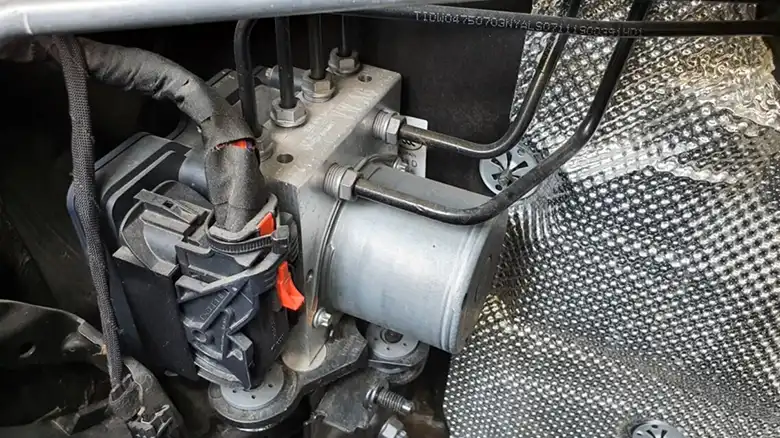What Is Fail Safe In Abs? Safety in Braking Systems
The fail-safe mode in an ABS system ensures basic brake function remains even if the ABS has an electrical failure, by isolating or bypassing the failed components.
When I started driving on race tracks, an important question was whether I needed a roll cage in my car. These events push vehicles and drivers closer to the limit, so safety is crucial. However, a full roll cage is a major modification with pros and cons to weigh.
Initially, I was unsure if a cage was necessary for my experience level. They protect occupants in a roll-over but also add weight and restrict interior space. After talking with other drivers, I realized the need depends on the type of tracking and car preparation.
For beginners doing lower-speed lapping days, a 4-point harness bar may suffice. This provides harness mounting points while minimally impacting the interior. As I gained experience and did higher-speed events, I installed a 6-point roll cage for maximum protection. I also added race seats, harnesses, and other safety gear to complement it.
Based on my experience, carefully evaluate your goals, car, and skill level when considering a cage. Prioritize safety, but balance this with practicality. With prudent preparation, you can enjoy track days thrillingly and securely.

Importance of Fail-Safe
Fail-Safe: Ensuring Continuous Functionality
Fail-safe in ABS is like a safety net in the event of system hiccups or failures. Imagine this: you’re driving in inclement weather, and you need to slam on the brakes to avoid an accident. Without a fail-safe mechanism, a system malfunction could leave you without any brakes at all – a dire situation, indeed.
Fail-Safe: A Crucial Back-Up Plan
Here’s the snag – the fail-safe in ABS ensures that even if a component within the ABS system fails or malfunctions, your brakes will still function effectively, albeit in a basic form. This is a pivotal safety feature, especially in the ever-evolving realm of automotive technology.
Key Details of What ‘Fail Safe’ in ABS
Fail-Safe in ABS means the system retains braking even if ABS fails. It’s vital for safety, ensuring brakes work despite ABS issues, offering control to the driver in case of system malfunctions. Here are the key details of what “Fail-Safe” in ABS entails:
- Purpose: The primary purpose of the fail-safe mechanism in ABS is to ensure that even if a component or sensor within the ABS system malfunctions or experiences a failure, the driver can still slow down and maintain control of the vehicle.
- Redundancy: Fail-safe mechanisms often incorporate redundancy. This means that there are backup components and systems in place. For example, if one sensor fails, another one can take over to continue regulating the braking pressure.
- Partial Braking Control: Fail-safe doesn’t necessarily restore the ABS to full functionality but allows for partial braking control. This means that even if ABS is not functioning optimally, the wheels won’t lock up completely during braking, preventing skidding and loss of control.
- Prevents Total Brake Failure: Fail-safe ABS is designed to prevent a complete loss of braking power, which could be extremely dangerous in emergencies. It ensures that some level of braking is always available to the driver.
- Safety in Adverse Conditions: Fail-safe mechanisms become especially crucial in adverse driving conditions, such as slippery roads or sudden stops, where ABS is essential for maintaining vehicle stability.
- Indicators: When a fail-safe mode is activated, it often triggers warning lights on the vehicle’s dashboard, alerting the driver to the system’s compromised status.
- Maintenance: Regular maintenance and checks of the ABS are important to ensure that the fail-safe mechanisms are in good working order. This maintenance can be part of routine vehicle servicing.
- Advanced Fail-Safe Technologies: With advancements in automotive technology, modern vehicles often feature advanced fail-safe technologies, including redundant electronic sensor systems and the integration of artificial intelligence and machine learning to enhance response times and precision.
Fail-Safe in ABS guarantees control during system failures, averting brake failure for road safety. Advances in technology enhance its reliability and effectiveness.
How Fail-Safe in ABS Works?
If the main ABS system fails, fail-safe mode uses the base brake system to keep some braking ability. Braking won’t be optimized without ABS, but fail-safe provides reliable stopping power.
Fail-Safe Components
To explore the fail-safe mechanism, we need to delve into its components:
- Redundant Circuits
Fail-safe systems incorporate redundant circuits, which essentially provide a backup if one circuit fails. This redundancy is a vital part of ensuring continuous brake functionality.
- Isolation of Failed Components
In case of a malfunction, the fail-safe system isolates the problematic component, preventing it from affecting the entire ABS system.
- Transition to Conventional Braking
If the fail-safe system detects a critical issue, it will transition to conventional, non-ABS braking, ensuring you can still stop your vehicle safely.
Common Fail-Safe Triggers
Fail-safe triggers when ABS components like the pump, accumulator, or controller malfunction. Electrical faults, hydraulic leaks, or mechanical damage can activate fail-safe mode.
Overcoming Hurdles
Understanding when and why fail-safe mechanisms come into play is crucial. Here are common triggers for fail-safe activation:
- Sensor Malfunctions
When ABS sensors malfunction, the fail-safe mode kicks in to prevent incorrect readings that might disrupt the braking system.
- Pump or Valve Failures
In the event of a pump or valve failure, the fail-safe system ensures the brakes still function, albeit without ABS modulation.
Benefits of Fail-Safe in ABS
Fail-safe maintains a crucial braking function if ABS quits, preventing a total loss of brakes. Though not optimized braking, fail-safe provides emergency stopping when it matters most.
Safety at the Core
The fail-safe in ABS is all about keeping you safe. It provides an extra layer of protection in case of system woes, adding peace of mind for drivers in today’s bustling and often finicky digital landscape.
Enhanced Control
By ensuring you can still stop your vehicle even in the face of ABS troubles, the fail-safe system offers a degree of control that’s invaluable when navigating tricky driving situations.
Drawbacks of Fail-Safe in ABS
Here are the drawbacks of “Fail-Safe in ABS” are given below:
Change in Brake Pedal Feel
When the system switches to fail-safe mode, drivers may experience a change in the brake pedal’s feel and response. This alteration in braking dynamics may require drivers to adapt to the differences, potentially affecting their driving experience.
Dependency on Sensor Accuracy
The effectiveness of fail-safe mechanisms depends on the accuracy of ABS sensors. If these sensors fail or provide incorrect information, the fail-safe system’s performance could be compromised.
Consumer Adaptation
Drivers need to be aware of how their vehicle behaves in fail-safe mode and adapt to the differences in braking performance. This adjustment can be challenging, especially for those who are not familiar with the system.
While fail-safe systems are indispensable for road safety, these drawbacks should be considered as trade-offs in the pursuit of enhanced braking security.
Answers to Your Common Questions
Q1. What triggers the fail-safe mode in ABS?
A1. The fail-safe mode in ABS is triggered by sensor failures, power disruptions, or other system malfunctions.
Q2. How often should ABS fail-safe mechanisms be checked?
A2. It’s recommended to have your ABS system checked during routine vehicle maintenance, usually at least once a year.
Q3. Are all ABS systems equipped with fail-safe mechanisms?
A3. Most modern ABS systems are equipped with fail-safe mechanisms, but it’s essential to check your vehicle’s specific features.
Q4. How does fail-safe ABS impact vehicle performance?
A4. Fail-safe ABS ensures that even in case of system failures, your vehicle can still maintain some braking functionality, thus preserving safety.
Q5. Can fail-safe ABS prevent all types of brake failures?
A5. While fail-safe mechanisms are effective, they may not prevent all types of brake failures, especially in extreme circumstances.
Q6. Are there limitations to fail-safe systems in ABS?
A6. Fail-safe systems are not infallible and may have limitations. They aim to maintain some level of brake functionality but may not restore the system to full operation.
Q7. What are the common indicators of an ABS fail-safe activation?
A7. Common indicators of fail-safe activation include warning lights on the dashboard and a change in the feel of the brake pedal.
Final Verdict
ABS fail-safe mode is an important backup feature that keeps some braking functions active if the main ABS fails. Understanding when and how fail-safe activates provides peace of mind that you’ll have brakes to stop the vehicle. While the braking won’t be optimized without ABS, fail-safe provides crucial, reliable deceleration in an emergency. Knowing your ABS fail-safe helps ensure safe transportation for you and your passengers.
